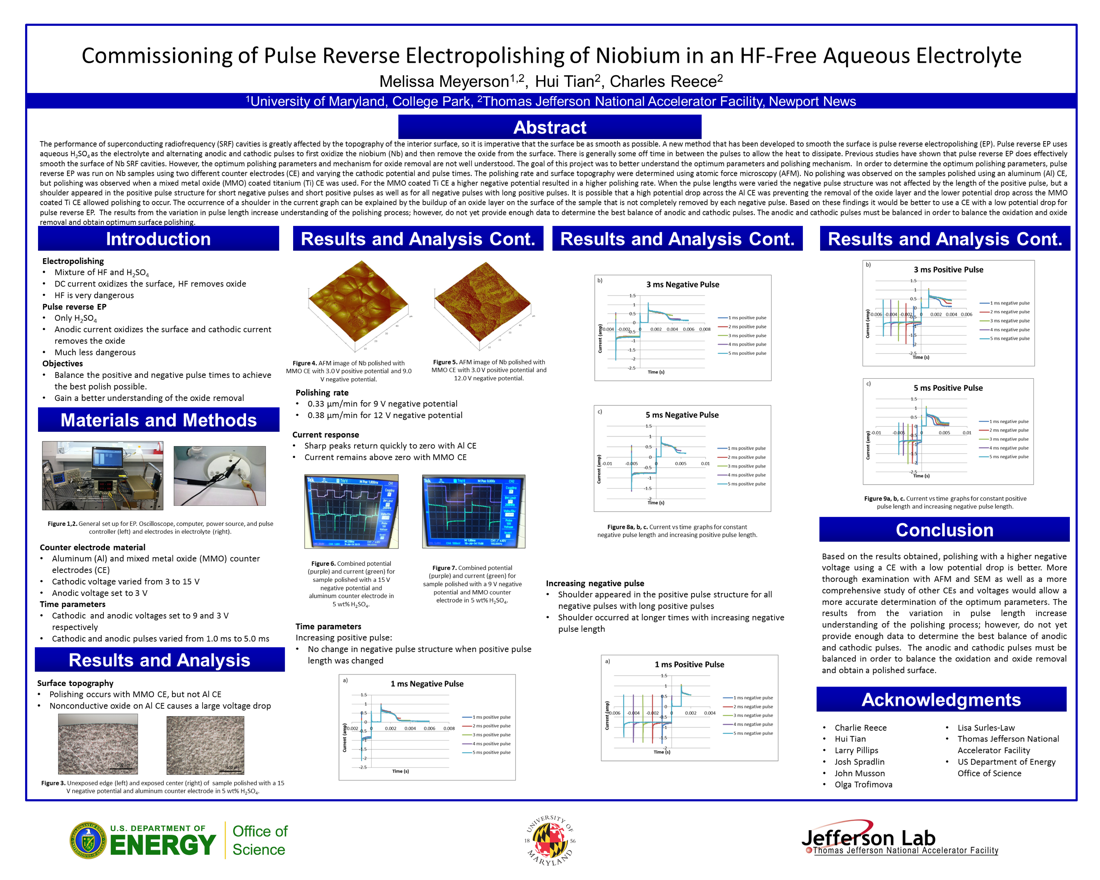Undergraduate Research at Jefferson Lab
Commission of Pulse Reverse Electropolishing of Niobium in a Hydrofluoric Acid-Free Aqueous Electrolyte
Student: Melissa Meyerson
School: University of Maryland
Mentored By: Charles Reece and Hui Tian
The performance of superconducting radiofrequency (SRF) cavities is greatly affected by the topography of the interior surface, so it is imperative that the surface be as smooth as possible. Pulse reverse electropolishing (EP) is a new method that uses alternating anodic and cathodic pulses to polish niobium (Nb). Previous studies have shown that pulse reverse EP effectively polishes the surface of Nb SRF cavities. However, the optimum polishing parameters and mechanism for oxide removal are not well understood. The goal of this project was to better understand the optimum parameters and polishing mechanism. Polishing occurred when a mixed metal oxide coated titanium counter electrode (CE) was used, but not an aluminum CE, which suggests that a CE with a lower potential drop is preferred. The variation of pulse lengths indicated that if the negative pulse is too short all of the oxide is not removed; however, there is not enough data to determine optimum polishing parameters.

Citation and linking information
For questions about this page, please contact Steve Gagnon.
